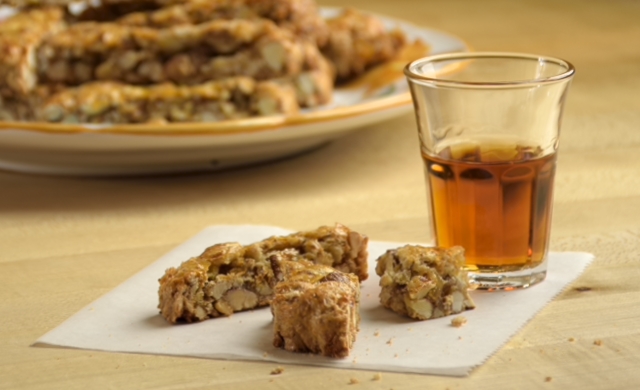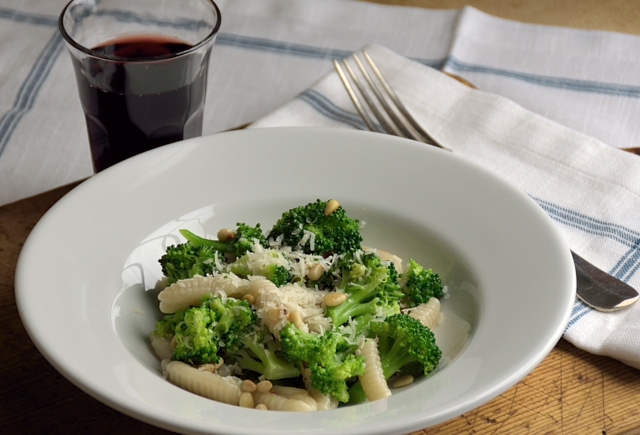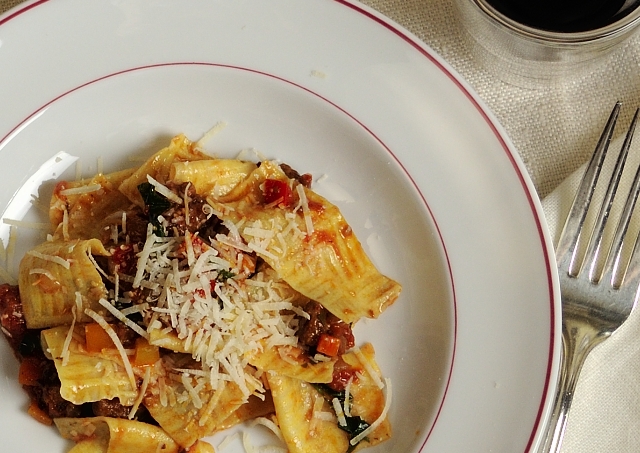Topic Index
The font size for a topic word is sized by the number of articles that reference that topic. The more articles the bigger the font.
Click on a word to search for posts with that topic. This page will reload with the search results.
Quaresimali – Chunky Almond Biscotti for Lent
Nobody does Easter like the Italians. From chocolate fantasy eggs and wonderful cookies to the famous Pastiera, celebration foods abound. Lent, or Quaresima as it is known in Italy, is the period from Ash Wednesday to Easter, a time of self-enforced culinary deprivation during which cucina magra, or the consumption of lean food, is the order of the day. This extends all the way to dessert. However, Italians have found plenty of ways to enjoy their treats during the Lenten season, and Quaresimali, a traditional cookie, is but one. Each region, each town, every bakery and every nonna has a unique rendition of this cookie. From tooth-breakingly hard and desperately in need of a dunk, to the delicate cocoa meringue alphabet cookies of Florence, these cookies are found throughout the country. Read the remainder of this entry »
Broccoli with Homemade Cavatelli and Crudo Extra Virgin Olive Oil
This dish is simple, unfussy, and flexible. Maybe that is one reason why it is so good. Vibrant green broccoli and toothsome pasta are tossed with toasted pine nuts, peperoncino flakes, Parmigiano, and warm garlic-scented olive oil. And what oil this is. When I decided to write this article, it was going to be about how to make a simple dinner and the traditional pasta corta (short pasta) known as cavatelli, but once I tasted a spoonful of the Crudo Extra Virgin olive oil, my perspective shifted, and the dish ran away with the spoon. Read the remainder of this entry »
Stracnar with Sausage and Pepper Ragù – more with a cavarola board
Stracnar and Stracenate, 2 names, 2 regions, 1 pasta
It is the height of summer here in Southern California, and I’ve been busy with frozen desserts, but a family has to eat. In between grilled steaks, chops and lots of salads we enjoy pasta tossed with hearty sauces of meat, tomatoes and herbs.
This dish comes from Southern Italy where the days are hot and the sun is high. The regions of Italy’s south, known collectively as the Mezzogiorno, include Abruzzo, Basilicata, Calabria, Campania, Molise, Puglia, Sardinia, and Sicily. This large swath of the country has long been regarded as separate, divided linguistically and culturally from the north. Even today, over one hundred and fifty years after unification, Italians proudly proclaim their own region’s unique heritage, and enjoy the same foods as their ancestors. Read the remainder of this entry »
Blood Orange and Bella di Cerignola Salad with Solerno
Gather ye rosebuds while ye may,
Old Time is still a-flying:
And this same flower that smiles to-day
To-morrow will be dying.
…Robert Herrick
It’s as true of blood oranges as rosebuds. Winter will soon be gone, and with it this most glorious citrus fruit. So juice up the Lenten season with blood oranges. There’s no sin in them.
This classic combination of blood oranges, black olives and a vinaigrette is a wonderful luncheon plate. And jazzing it up with a drizzle of Solerno blood orange liqueur updates it a bit. I’ve used black Bella di Cerignola olives. These olives are delicacies. Huge, with meaty flesh that yields to the bite, they come from Foggia in the region of Puglia. Try them once, and you will be hooked. Read the remainder of this entry »
Stracenate, Stracnar and a Cavarola Board
“…This is another of those great old pastas that must be made manually and is disappearing, but let us revive it…”
– Giuliano Bugialli, in Bugialli on Pasta
Everything old is new again. No jive. Question: What’s a cavarola? Answer: a small rectangular wooden board with a herringbone surface used to make some of the traditional pastas of Italy’s Mezzogiorno. These household boards are relatively small, usually about 12 inches long and 8 inches wide. They can be made from any wood – fruit woods and beech being very commonly used. The herringbone pattern is carved into one side of the board, and is transferred to the pasta with a rolling pin. The resulting pasta is unique, lovely to look at and the irregular surface holds condimenti better than any smooth pasta ever could. Read the remainder of this entry »




